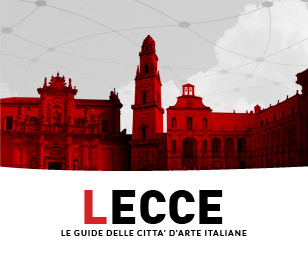Fontana dei Quattro Fiumi
Centro Storico

- Artista: Gian Lorenzo Bernini
- Dove: Fontana dei Quattro Fiumi
- Indirizzo: Piazza Navona
Il contesto urbano nel quale è inserita la Fontana, opera di Gian Lorenzo Bernini, è costituito da uno spazio - quello di piazza Navona - frutto di interventi sovrapposti e integrati nel tempo che hanno impresso tracce storiche ininterrotte, ancora riscontrabili nelle architetture che prospettano sulla Piazza. Qui l’antico stadio di Domiziano (costruito nel periodo tra l’81 e l’86 d.C.) rappresenta tuttora, nella città moderna, la matrice formale e dimensionale riconoscibile.La Fontana, voluta da Papa Innocenzo X Pamphilj (1644-1655), assume un ruolo centrale nel programma urbanistico e edilizio del Pontefice, che individua in piazza Navona il luogo più rappresentativo per magnificare la grandezza del suo papato. La Piazza, infatti, è oggetto di una imponente risistemazione che comprende anche la costruzione di Palazzo Pamphilj e della Chiesa di S. Agnese in Agone.Innocenzo X, nei primi anni del suo pontificato, progetta, infatti, di far edificare al centro della Piazza (nel posto in cui c’era un “beveratore” per i cavalli) la più maestosa e monumentale fontana mai realizzata a Roma e il primo affidamento per i lavori è testimoniato da un chirografo papale dell’11 aprile 1647 con il quale il Pontefice dispone che l’acqua dell’acquedotto Vergine sia portata in Piazza Navona prima che essa giunga a Fontana di Trevi e che Francesco Borromini sia l’architetto incaricato della progettazione dei lavori. Gian Lorenzo Bernini, però, subentra a Borromini nell’incarico (1648) dopo aver sottoposto al Papa un modello in argento della Fontana che viene subito accolto. L’artista realizza numerosi disegni e modelli, alcuni dei quali ancora conservati, e per la esecuzione del monumento si avvale di alcuni suoi collaboratori abituali, scultori e scalpellini, ai quali affida l’attuazione del progetto, sotto il suo diretto controllo.Gli elementi in travertino, interamente scolpiti in opera, vengono eseguiti da un gruppo di scalpellini capeggiati da Giovanni Maria Fracchi: alcune fonti testimoniano che Bernini rifinisce personalmente le parti raffiguranti la scogliera, gli animali e la vegetazione. E' nota l’estemporaneità nel modo di procedere di Bernini: spesso, infatti, il risultato artistico è frutto della coincidenza tra ideazione e progettazione, che si saldano nell’opera grazie alla sua completa padronanza dei mezzi tecnici. Le statue in marmo dei Fiumi: Nilo (eseguito da Giacomo Antonio Fancelli), Gange (da Claude Poussin), Danubio (da Antonio Raggi), Rio de la Plata (da Francesco Baratta) e gli stemmi papali vengono lavorati fuori opera, successivamente assemblati e posizionati sulla scogliera, che fa da basamento a un obelisco egizio in granito sormontato da una colomba in bronzo, simbolo di pace e del casato Pamphilj. I cinque pezzi dell’obelisco giacevano nel Circo di Massenzio da cui vengono trasportati a Piazza Navona nel 1648 nonché ricomposti e innalzati sulla scogliera nel 1649. Il tema iconografico della Fontana, pur nella molteplicità e complessità delle interpretazioni, riguarda, in primo luogo, il predominio del papato sul mondo, rappresentato dai quattro principali fiumi che attraversano i continenti allora conosciuti (Europa, America, Africa, Asia). Il 12 giugno 1651 viene inaugurata la Fontana suscitando nel Committente e negli osservatori grande stupore e meraviglia, come riferiscono le cronache dell’epoca e i racconti dei viaggiatori.



